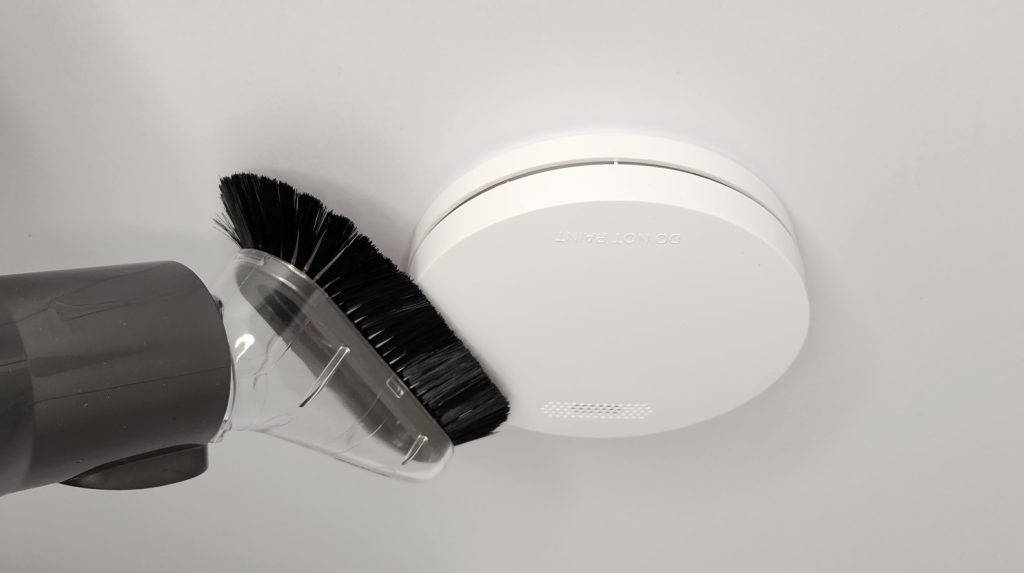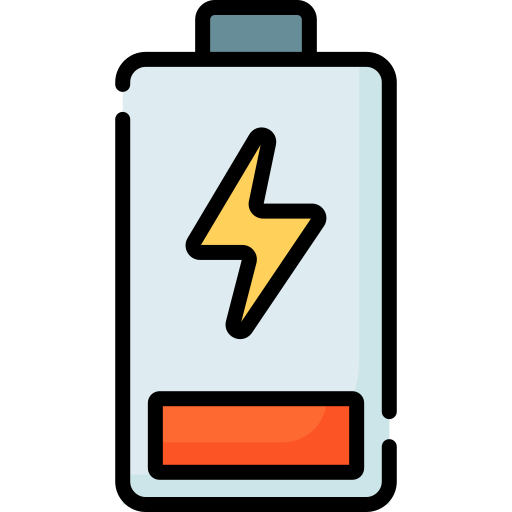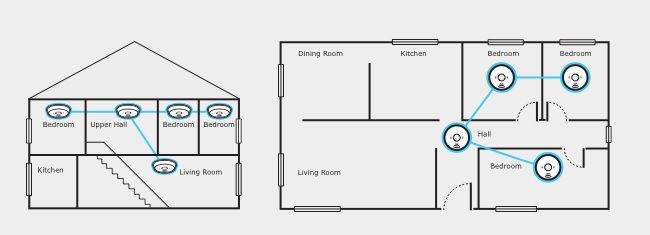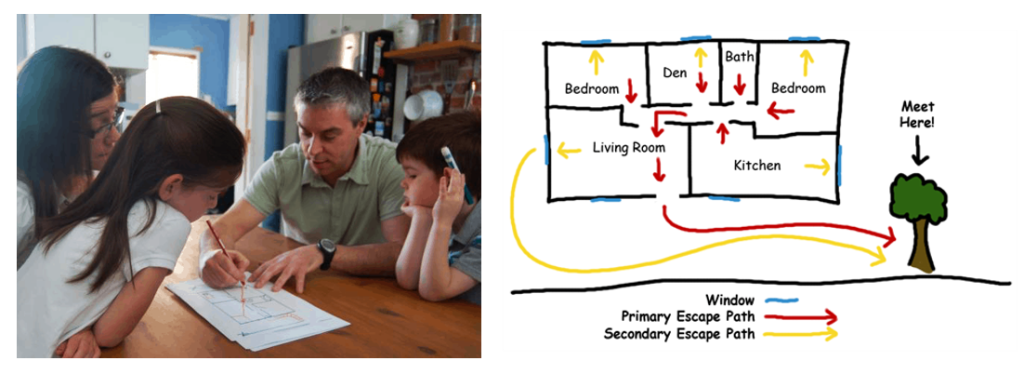As the winter chill gradually gives way to the warmth of a Queensland spring, we find ourselves emerging from the cozy hibernation of the colder months. Spring cleaning, gardening and home maintenance tasks become top priorities, and one key activity that should not be overlooked is checking your interconnected photoelectric fire alarms. Whilst this may not seem like the most glamorous of springtime duties, it is undeniably one of the most important ones. The primary purpose of a smoke alarm is to protect you and your loved ones in the event of a fire. By checking them in the spring, you ensure that they are in good working condition and ready to alert you in case of an emergency.
Here’s how you should make checking your interconnected photoelectric fire alarms a regular springtime ritual.
Photoelectric Fire Alarm Spring Cleaning
Did you know that the changing of the seasons can have an impact on your photoelectric fire alarms? Over time, dust and debris can accumulate inside them, reducing their efficiency and increasing the possibility for nuisance alarms. Whilst you’re already in spring cleaning mode, why not take a few extra minutes to ensure your alarms are fully clean and operational?
Give them a wipe down with a clean microfibre cloth and then gently vacuum around the exterior shell of your photoelectric fire alarms with the soft brush attachment from a vacuum cleaner to remove any cobwebs, dust build-up etc. which may have occurred over the winter months. Outside of this spring time activity it is recommended to clean your ZEN Smoke Alarms every 6 months.

Photoelectric Fire Alarms Battery Check
Smoke alarms obviously often rely on batteries for power, and these batteries can weaken or die over time. Fortunately most modern photoelectric smoke detectors are now equipped with 10-year long life lithium batteries which are sealed inside the smoke alarm itself (after 10 years the entire smoke alarm is simply swapped out for a new one).
However, if you still have an older style battery fire alarm which uses 9V replaceable batteries then spring is a great time to either replace the old batteries with fresh ones, or our recommendation is to upgrade to new battery fire alarms with 10-year long life batteries. So, go ahead, replace those dusty old 9V replaceable battery smoke alarms in springtime with the newest photoelectric fire alarms equipped with 10-year long life batteries, and ensure your interconnected photoelectric fire alarms are always ready to do their job.

Testing Your Photoelectric Fire Alarms
Testing your interconnected photoelectric fire alarms is a relatively quick and straightforward task. You don’t need any special tools or expertise. Interconnected photoelectric smoke alarms have a ‘test’ button that you can press to ensure they are working correctly. It’s a small effort for a significant safety boost. In QLD, photoelectric smoke alarms must be interconnected (so if one smoke alarm activates, they all do).
When testing your photoelectric smoke alarms be sure to check that all the smoke alarms are interconnected and activate together, usually within about 10 seconds of the test button being pressed on the first interconnected fire alarm. If not, it’s time for some troubleshooting or possibly a replacement. Outside of this annual spring time activity it is also recommended to test your ZEN Smoke Alarms monthly.

Photoelectric Fire Alarms Expiry Date
Photoelectric fire alarms don’t last forever and should be replaced 10 years from the date of manufacture. According to Australian Standard 3786:2014, the smoke alarm date of manufacture should be printed on the rear of the smoke alarm – go on, have a look. If they’re older than 10 years then they should be replaced with newer models. Why? Photoelectric sensors and other internal components can degrade over time, leading to a less effective photoelectric smoke alarm.

Location Of Your Photoelectric Fire Alarms
Whilst you’re at it, double-check the placement of your photoelectric fire alarms. Are they strategically positioned throughout your home as per Queensland smoke alarm laws? In Queensland there should be one interconnected photoelectric smoke detector inside each bedroom, the interconnecting hallway outside the bedrooms, and at least one on each level of your home. If there is no interconnecting hallway outside the bedrooms then a photoelectric smoke alarm must be installed outside the bedroom and other parts of the storey. Proper placement can make all the difference in early detection.

Teach Your Family About Smoke Alarms
Checking your photoelectric fire alarms in the spring also presents a valuable opportunity to educate your family about fire safety, particularly young children. Show them how to test the alarms and explain the steps to take if they ever hear one go off, including who to call. Surprisingly, young children may not automatically associate the sound of a smoke alarm with danger, so this education is very important. In an emergency, phone 000 (triple zero) to contact the Queensland Fire Department for immediate assistance.
If you don’t already have one, spring is also the perfect time to create a home fire escape plan and rehearse it with your family. Familiarizing everyone with escape routes and emergency procedures can significantly reduce stress and confusion in a crisis, ensuring everyone knows exactly what to do when every second counts.

Conclusion
So there you have it, as you embark on your spring cleaning rituals and home maintenance tasks, don’t forget to check your photoelectric fire alarms. It’s a simple yet essential step to ensure the safety of your home and loved ones. With working interconnected photoelectric smoke alarms in place, you can enjoy the beauty and rejuvenation of a QLD spring with the peace of mind that you are well-prepared for any potential fire-related emergencies. So, make it a springtime tradition to give your ZEN Smoke Alarms the attention they deserve – because the safety of your loved ones always comes first.

Want to know more? Watch our ZEN Smoke Alarm YouTube channel or call us on 0478 596 402 today
We love talking smoke alarms!
ZEN Photoelectric Smoke Alarms
New Farm, QLD, 4005

